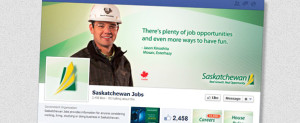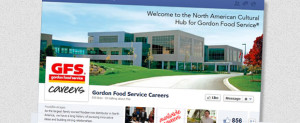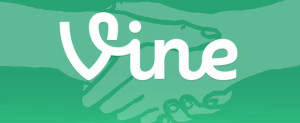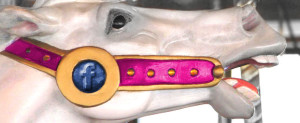Reg Hamilton is a specialist in Interactive Media. He has over 18 years of tech experience, is an accomplished artist and designer, represents Phoenix Group on the Interactive Advertising Bureau of Canada’s Mobile and Social Media Council, and his LinkedIn profile was one of the most viewed in 2012.
So as you can imagine, he’s a pretty busy guy. That’s why we feel very lucky that Reg has agreed to share some of his knowledge with the Jobcast blog.
Jobcast: Hi Reg, would you mind explaining to our readers what Phoenix Group is all about?
Reg: Phoenix Group is a full-service advertising agency with nearly 40 staff. We offer branding, creative, interactive and media services. Phoenix Group is a place where ideas grow. We create outstanding creative campaigns and build long-term value for our client’s brands. We’re about growth and results. We’re about thinking. Good thinking. That means great creative that grows business ideas and solutions. Our leadership team does a great job providing a supportive atmosphere that encourages success.
Jobcast: Phoenix Group has been very successful with Facebook to grow their clients brands. The results of your “Riders Oath” campaign for the Saskatchewan Roughriders were outstanding. Why did you decide to make Facebook a priority for brand promotion?
Reg: Rider Nation is a powerful force of nature. Phoenix Group and the Riders decided to focus on growing the number of Facebook fans. Due to the large number of existing fans—around 76,000—there was a significant opportunity to mine this group of people to reach likeminded brand loyalists. A target was set to increase the number of fans to 100,000: if reached, this number of Friends would lay the foundation for a powerful customer database. In addition, the team wanted to continue to lead the league in merchandise sales, fan avidity, and visitors’ game attendance figures. Because the Riders are such an important part of their fans’ lives, social media is a great way to reach them and to join the conversation
The integrated campaign produced outstanding results, with the number of Facebook fans increasing by more than 24,500 (for a total of 103,679 by the end of the year). We feel Facebook influenced results, with ticket sales virtually sold out for the year and over 67% of all CFL merchandise sales were Riders products.
Jobcast: Are there any key pointers you could give our readers about improving their branding with Facebook?
Reg: Content is king and context is God. The narrative rules and social stories attract fans. Give the fans 10x more than you ask for. Facebook is a great channel for content. Our Community Managers encourage fan engagement with conversation starters and questions posed to the community to encourage conversation and participation amongst users.
Tone is one of the most important aspects of any social media strategy. Users expect to engage with content they relate to on social media—they don’t want to be told; they want to have a conversation. Be honest; be real; give them something they are interested in.
The use of social media is an opportunity for the brand to develop a ‘human’ tone without representing an individual person or employee. It is important each post and interaction has the appropriate message for each social channel and uses a conversational, creative voice.
It is also important to note that there will be feedback, both positive and negative. Both should be dealt with on a timely basis. Having an effective and dedicated community manager, along with an appropriate strategy will ensure the conversation thrives and moves forward—don’t get lazy.
Jobcast: In your current campaign “Think Saskatchewan Jobs” you’re tasked with branding an entire Province! Can you talk a bit about the project and the types of social media strategies you’re employing?
Reg: Saskatchewan is booming. We have what the world wants and needs. Saskatchewan has one of the strongest and most stable economies in the world. With plentiful resources in demand around the globe, the Canadian province offers strong long-term career prospects. In fact, Saskatchewan has the lowest unemployment rate in Canada. Saskatchewan offers a high quality of life, with excellent education and health systems, affordable cultural and recreational activities and short commute times. It has everything you need to raise a family and advance your career. That’s the Saskatchewan story. Our Government recognizes the importance of social media and the benefits of using Facebook as an innovative channel for getting this message out.
Some brands tend to use Facebook fan acquisition strategies that are one dimensional—Like us to win a pizza or hot tub, share your personal family photos and your story to be entered to win an iPad. We are all used to seeing that approach. It’s like an extension of old school newspaper enter to win into social. Well, we wanted to do social differently.
Our objective is to grow a vibrant Facebook community to showcase Saskatchewan as a place of opportunity. This is accomplished by promoting job opportunities in the province on Facebook through the use of the Jobcast API recruitment app, by offering tips and tools on re-locating to the province and by creating conversation around quality of life and jobs. Having actual people who live here—or better yet, who moved here—talking about Saskatchewan is far more credible than the Government praising the virtues of our province.
Jobcast: We love what you’ve done with the Think Saskatchewan Jobs Facebook Career Page. How effective have you found recruiting with Facebook to be?
Reg: The rate of fan grow of this community is outstanding, with 2,400+ Likes in the first couple of weeks of the campaign. What’s really amazing is the total weekly reach is averaging out around 1.7 Million people hearing about Saskatchewan jobs. The very nature of social media enables the creation and maintenance of relationships. As a result, job marketing fits in perfectly. We are really happy with CTR on job applications at 10%
Jobcast: The level of interaction that you maintain with your followers on the Think Saskatchewan Jobs Facebook Page is impressive. In what ways do you feel maintaining a dialogue with fans benefits social recruiting?
Reg: The most effective strategy is to focus on building a strong, focused community on Facebook to attract job seekers to the province. The most effective approach was to use a combination of relevant content and Facebook apps.
The right mix of content is very important when it comes to social media. It is important to keep campaign goals in mind, but to also offer the community content relevant to their needs. Social job seekers want to engage with you and they also want interesting and helpful information that’s not just from you. The best practice rule content ratio for social recruiting is:
Jobcast: What are the biggest challenges you’ve faced in implementing social recruiting strategy for Think Saskatchewan Jobs?
Reg: This campaign represents the most recent social media marketing effort for the Government of Saskatchewan. Much research and effort went into developing the right strategy to ensure its success. There are many elements involved in this campaign, so excellent teamwork is critical to achieve success. Our creative team together with our client do an awesome job of positioning this positive message in carefully crafted stories.
Jobcast: Many employers are intimidated by the idea of of using Facebook for talent acquisition. Do you have any advice for getting started with Facebook recruiting?
Reg: Fish where the fish are. Companies looking to make new hires are seeking the most cost-effective, efficient ways to find new talent. Job boards launched a revolution in recruiting more than 15 years ago. And now, social networks are doing the same—but in a much more targeted way. Through social recruiting, companies are learning they can find the best talent efficiently and very quickly.
Jobcast: Why did The Phoenix Group choose the Jobcast app for the Think Saskatchewan Jobs campaign?
Reg: Canada, we love Canadian technology solutions. The Jobcast app fit the requirements we needed to a tee. The user flow to search the jobs and apply is excellent. The Jobcast technical staff worked out a perfect solution to synchronize 10,000+ jobs in a tight 5-day turn around. Jobcast is great to work with and are providing wonderful results. The Jobcast app is really flexible so our creative team was able to ensure all elements were on brand.
Jobcast: Thank you, we’re glad to be a part of such a cool campaign!
You’re obviously a pro when it comes to social media. What do you think have been the key factors to your success?
Reg: That’s a nice compliment, but I think it comes down to hard work. I’ve always been an early adopter of new technology. Social media isn’t a silver bullet or an instant win for everyone, it takes more than just starting a Facebook page to be successful. It takes a good strategy that defines who the target audience is and what the goals and objectives are, then diligence and attention to keep things moving in the right direction. There’s no finish line, either. When you achieve your objectives, it’s time to set new ones. Social media doesn’t stop; the conversation doesn’t end when you achieve your goal it keeps going.
You can find out more about Phoenix Group on their website and look up Reg on LinkedIn and Twitter. To plan your move to Saskatchewan or see an example of an effective Facebook Career Page check out Think Saskatchewan Jobs on Facebook.
We’d like to extend a huge thank you to Reg for sharing his advice and experiences, we really appreciate it!









